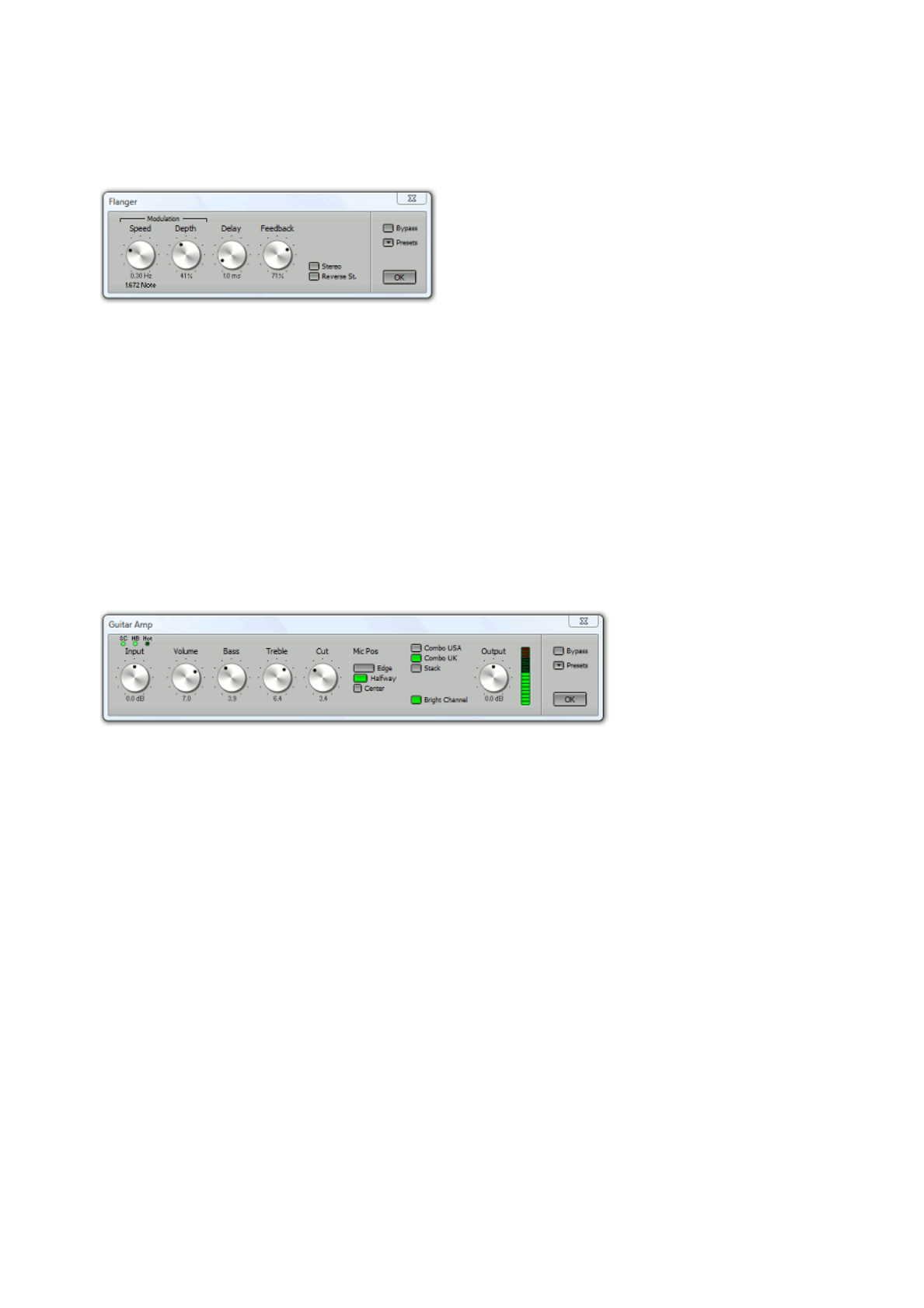User Guide
Table Of Contents
- Contents
- 1 Introduction
- 2 Songs
- 3 Transport
- 4 Recording
- 5 Playback and Mixing
- 6 Mastering and Mixdown
- 7 Effects
- 7.1 Automated Fader
- 7.2 Band Effect
- 7.3 Chorus
- 7.4 Compressor
- 7.5 Convolutor
- 7.6 Deesser
- 7.7 Doubler
- 7.8 Dynamics
- 7.9 Echo
- 7.10 EQ
- 7.11 Exciter
- 7.12 Flanger
- 7.13 Guitar Amp
- 7.14 Master Limiter
- 7.15 Multi Effect
- 7.16 Noisegate
- 7.17 Parallel Effect
- 7.18 Phase Inverter
- 7.19 Phaser
- 7.20 Pseudo Stereo
- 7.21 Reverb
- 7.22 Rotor
- 7.23 Saturation
- 7.24 Stereo Effect
- 7.25 Tremolo
- 7.26 Tuner
- 7.27 Vibrato
- 7.28 VST Plugins
- 7.29 DX Plugins
- 7.30 External Sidechain Routing
- 8 MIDI Instruments
- 9 Automation
- 10 Editing
- 10.1 Editing Tracks
- 10.2 Editing Audio Tracks
- 10.3 Vocal Pitch Correction
- 10.4 Editing MIDI Tracks
- 10.5 Editing Notes
- 10.6 Pianoroll Editor
- 10.7 Notation Editor
- 10.8 Drum Editor
- 10.9 Controller Editor
- 10.10 MIDI Pattern Editing
- 10.11 Tempo/Time Signature Editing
- 10.12 Song Editor
- 10.13 Multi MIDI Editor
- 10.14 Multitrack Editing
- 10.15 Chords and Lyrics
- 11 Devices
- 12 Control Surfaces
- 13 Audio and MIDI Files
- 14 Keyboard Shortcuts
- 15 Touchscreens
- 16 Preferences
- 17 Tools
- 18 Miscellaneous
- 19 Requirements
- 20 Troubleshooting

7.12 Flanger
Flanging is the effect that occurs when two tape recorders playing back the same signal run slightly out of
sync.
Flanger window
The Delay knob sets the average delay time. The Speed and Depth knob control the modulation.
The higher the Feedback position, the more effective the effect is.
When the Stereo button is active the delay times of both stereo channels will be modulated with out-of-
phase signals. With low delay settings this sounds like a rotating speaker. Reverse St. button is identical,
except that the signal will 'spin' in opposite direction.
7.13 Guitar Amp
Note: this feature is available in the Pro Plus edition only. Use of the AsioSnd or the VistaSound driverset is
required to play the amp live.
The Guitar Amp effect emulates three vintage guitar amps: Combo USA, Combo UK and Stack.
Guitar Amp window
The Input knob determines the amps input gain. The three LEDs located above the knob serve as level
indicator. They can be used to make the amp see the same input level as the hardware version would. The
SC (single coil) LED will light if the level equals the output of a single coil pickup. The HB (humbucker) LED
will light if the level equals the level of a humbucker pickup. The Hot LED will light if the level is even higher,
in this case you're using a virtual booster stomp box. Note that the LEDs assumes you're playing the guitar
as hard as possible (eg. some powerful rhythm chords). The LEDs are supposed to light during the loudest
signal peaks only. Don't worry if no LED ever lights while playing more subtle parts: a real amp would see a
lower level too.
The LEDs are just a way to make it easy to set up the amp to work just like the hardware version. You can
ignore the LEDs if you like. You can, for example, use a higher setting to get a more distortion.
A guitar amp's 'Lo' input is 6 dB less sensitive than the 'Hi' input. You can turn the Input knob down 6 dB in
order to virtually plug your guitar in the Lo input.
The Output knob controls the output level. The meter on the right shows the output level. It is important to
stay out of the red section if the amp is played live, in order to avoid clipping. Typical values range from 0
dB (overdrive sounds) to approx. 10 dB (clean sounds).
Volume, Bass, Mid (or Cut in case of the Combo UK amp), Treble and Bright control the actual guitar
amp. The Bright switch toggles between the amp's "normal" and "bright" channels. Mic Pos controls the
position of the microphone relative to the guitar cab's speaker.
The Combo UK's normal channel has a built-in treble booster: The amp's input is more sensitive (use the
Input knob to control the sensitivity). The Treble knob controls the amount of treble boost. The Bass knob
cuts a certain amount of bass, closely emulating the the bass response of various versions of this particular
amp.










